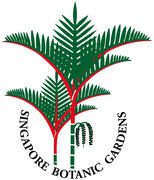Aniseia
Accepted name/Authority/Place of publication:
ANISEIA Choisy, Mém. Soc. Phys. Genève 6: 481(1833 publ. 1834).
Tribe:
Aniseieae
Synonyms:
Ipomoea sect. Aniseia (Choisy) Gagnep. & Courchet, Flore Générale de l'Indo-Chine 4: 231. 1915.
Ipomoea subgen. Aniseia (Choisy) C.B. Clarke, Flora of British India 4: 200. 1883.
Type Species:
Aniseia martinicensis (Jacq.) Choisy, lectotype designated by A. L. Cabrera, Manual Fl. Alrededores Buenos Aires 379 (1953).
Habit:
Vines. Stems herbaceous, mostly trailing on ground or over other plants, becoming somewhat woody near base.
Leaves:
Leaves usually with short petioles of up to 1 cm, rarely longer, blades linear to ovate or elliptical, often mucronate, entire, basally cuneate to rounded, apically obtuse to acuminate.
Inflorescences:
Inflorescences mostly solitary, less often cymose.
Flowers:
Flowers axillary, with no detectable odor, at least in two species opening at different times; sepals herbaceous, markedly unequal, the outer 3 larger than inner 2, those larger supporting base of corolla, acuminate apically, cordate to decurrent basally; corollas white, campanulate, the limb 5-dentate or +- entire, with 5 pubescent interplicae, 1-3 cm long; stamens included, the stamens +- equal, with glandular trichomes at bases of filaments, anthers oblong to +- sagittate, pollen rugate; ovary +- cylindrical to conical, glabrous, 2-locular, locules 2-ovulate, disc small or absent, style included, single, entire, with a 2-globose stigma.
Pollen:
Rugate, cf. http://ag.arizona.edu/herbarium/assoc/projects/convolv/Aniseia_martinicensis.htm
Fruits:
Fruits capsular, globose to ovoid, 2-celled, 4-valvate, brown.
Seeds:
Seeds often 4, glabrous or with short erect trichomes around margins forming wing-like appendages, densely pubescent on all surfaces in one species, the hilum often somewhat triangular.
Chromosome details
Origin:
Panama. Herrera.
Chromosome number:
60
Collector(s):
Burch et al.
Collector number:
1360 (MO)
Publication(chromosome):
Lewis, WH and RL Oliver. Ann. Missouri Bot. Gard. 56:471-475 (1969).
Chemical Data:
To date there are reports on secondary metabolites of only one species: Aniseia martinicensis
Distribution:
Mexico, Central and South America; A. martinicensis introduced into southern Florida (waif) and the Old World tropics. map
Ecology:
Typically growing along waterways, sometimes even floating with other plants on water surface.
Common names and uses:
Potu-pala (potu = bark, pala = vine; Singhalese, Sri Lanka). Leaves eaten in several countries, particularly in the Old World.
Number of Species:
3
Contributors:




















